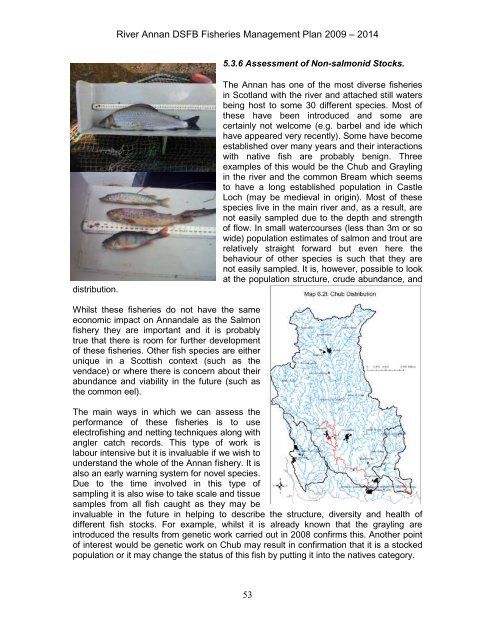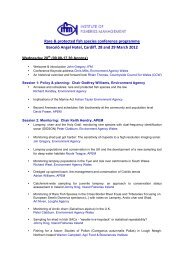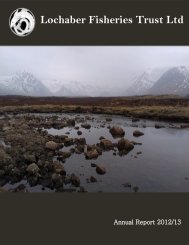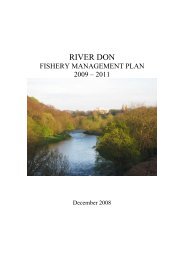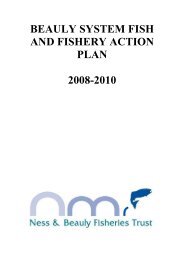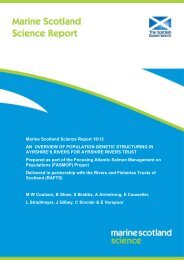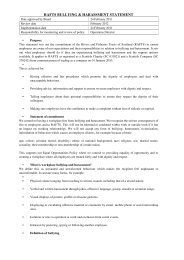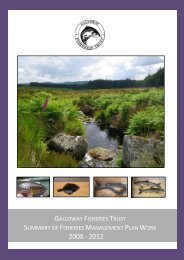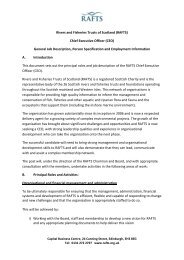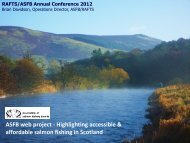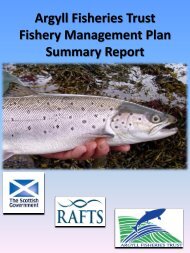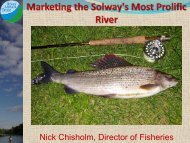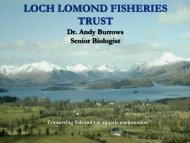You also want an ePaper? Increase the reach of your titles
YUMPU automatically turns print PDFs into web optimized ePapers that Google loves.
River <strong>Annan</strong> DSFB Fisheries <strong>Management</strong> <strong>Plan</strong> 2009 – 20145.3.6 Assessment of Non-salmonid Stocks.distribution.The <strong>Annan</strong> has one of the most diverse fisheriesin Scotland with the river and attached still watersbeing host to some 30 different species. Most ofthese have been introduced and some arecertainly not welcome (e.g. barbel and ide whichhave appeared very recently). Some have becomeestablished over many years and their interactionswith native fish are probably benign. Threeexamples of this would be the Chub and Graylingin the river and the common Bream which seemsto have a long established population in CastleLoch (may be medieval in origin). Most of thesespecies live in the main river and, as a result, arenot easily sampled due to the depth and strengthof flow. In small watercourses (less than 3m or sowide) population estimates of salmon and trout arerelatively straight forward but even here thebehaviour of other species is such that they arenot easily sampled. It is, however, possible to lookat the population structure, crude abundance, andWhilst these fisheries do not have the sameeconomic impact on <strong>Annan</strong>dale as the Salmonfishery they are important and it is probablytrue that there is room for further developmentof these fisheries. Other fish species are eitherunique in a Scottish context (such as thevendace) or where there is concern about theirabundance and viability in the future (such asthe common eel).The main ways in which we can assess theperformance of these fisheries is to useelectrofishing and netting techniques along withangler catch records. This type of work islabour intensive but it is invaluable if we wish tounderstand the whole of the <strong>Annan</strong> fishery. It isalso an early warning system for novel species.Due to the time involved in this type ofsampling it is also wise to take scale and tissuesamples from all fish caught as they may beinvaluable in the future in helping to describe the structure, diversity and health ofdifferent fish stocks. For example, whilst it is already known that the grayling areintroduced the results from genetic work carried out in 2008 confirms this. Another pointof interest would be genetic work on Chub may result in confirmation that it is a stockedpopulation or it may change the status of this fish by putting it into the natives category.53


